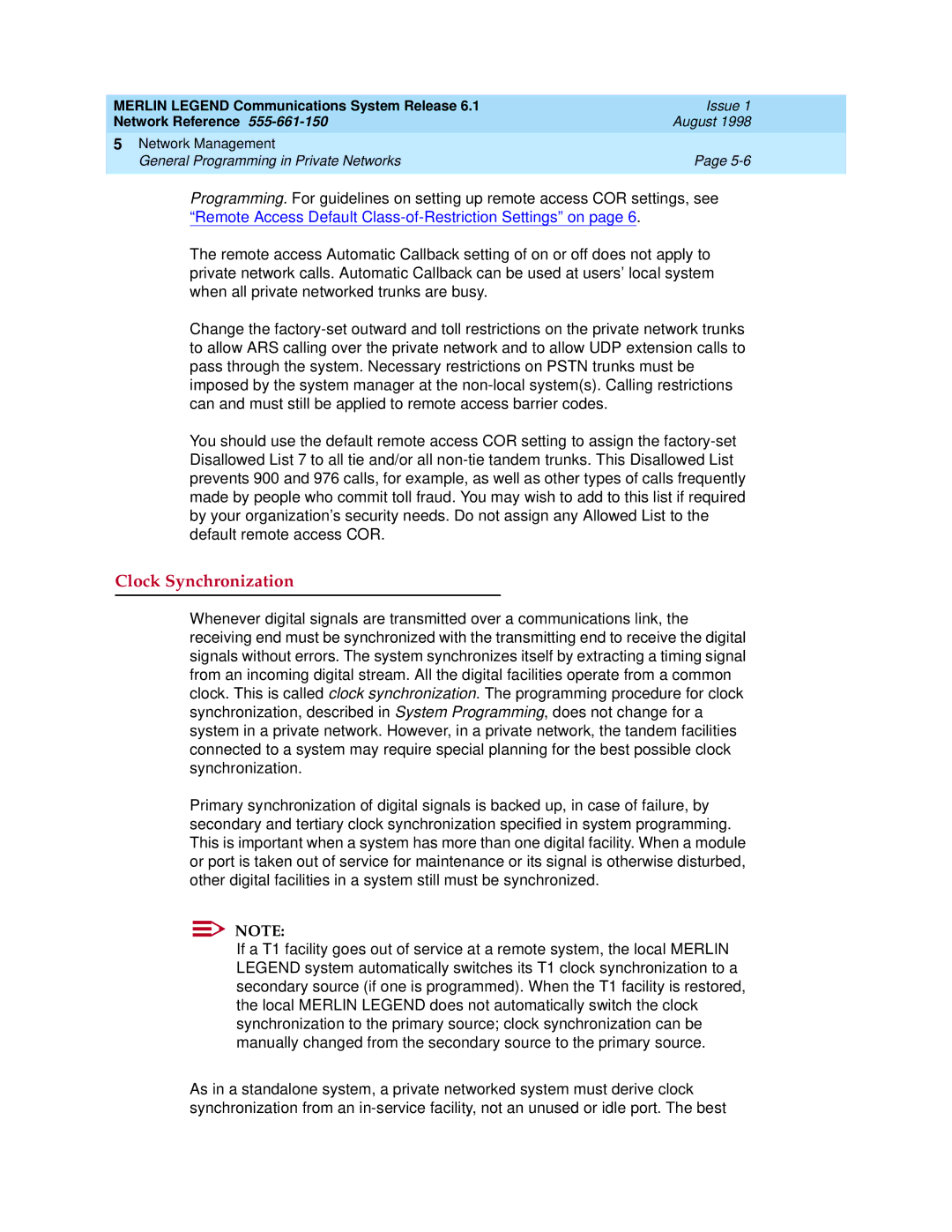MERLIN LEGEND Communications System Release 6.1 | Issue 1 |
Network Reference | August 1998 |
5 Network Management |
|
General Programming in Private Networks | Page |
|
|
Programming. For guidelines on setting up remote access COR settings, see “Remote Access Default
The remote access Automatic Callback setting of on or off does not apply to private network calls. Automatic Callback can be used at users’ local system when all private networked trunks are busy.
Change the
You should use the default remote access COR setting to assign the
Clock Synchronization | 5 |
Whenever digital signals are transmitted over a communications link, the receiving end must be synchronized with the transmitting end to receive the digital signals without errors. The system synchronizes itself by extracting a timing signal from an incoming digital stream. All the digital facilities operate from a common clock. This is called clock synchronization. The programming procedure for clock synchronization, described in System Programming, does not change for a system in a private network. However, in a private network, the tandem facilities connected to a system may require special planning for the best possible clock synchronization.
Primary synchronization of digital signals is backed up, in case of failure, by secondary and tertiary clock synchronization specified in system programming. This is important when a system has more than one digital facility. When a module or port is taken out of service for maintenance or its signal is otherwise disturbed, other digital facilities in a system still must be synchronized.
NOTE:
If a T1 facility goes out of service at a remote system, the local MERLIN LEGEND system automatically switches its T1 clock synchronization to a secondary source (if one is programmed). When the T1 facility is restored, the local MERLIN LEGEND does not automatically switch the clock synchronization to the primary source; clock synchronization can be manually changed from the secondary source to the primary source.
As in a standalone system, a private networked system must derive clock synchronization from an
